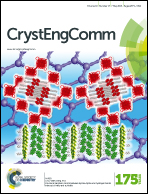Controllable synthesis of amine-functionalized Fe3O4 polyhedra for lipase immobilization
Abstract
We developed an efficient strategy to synthesize Fe3O4 truncated cubes, rhombic dodecahedra and octahedra with exposed {100}/{110}, {110} and {111} facets, respectively. Fourier transform infrared (FT-IR) and X-ray photoelectron spectroscopy (XPS) spectra indicated that the Fe3O4 polyhedra were functionalized with a –NH2 group. Magnetic measurements revealed that the prepared products have a high saturation magnetization and low coercive force. Because of the magnetic nature and amine-functionalized surfaces, the as-synthesized Fe3O4 polyhedra were employed as ideal magnetic carriers for lipase immobilization. Bradford protein assays indicated that the lipase loading amounts on Fe3O4 truncated cubes, rhombic dodecahedra and octahedra were 174.7, 175.6 and 175.8 mg of protein per g, respectively. Thermal stability tests revealed that the lipase immobilized on Fe3O4 octahedra was bound with great efficiency preserving the high catalytic activity and amplifying the stability. Reusability assays indicated that the lipase immobilized on Fe3O4 octahedra can be reused 4 times without a marked loss of catalytic activity (<8%). This work demonstrated that the prepared Fe3O4 octahedra were more stable and had promising applications in biological fields.


 Please wait while we load your content...
Please wait while we load your content...